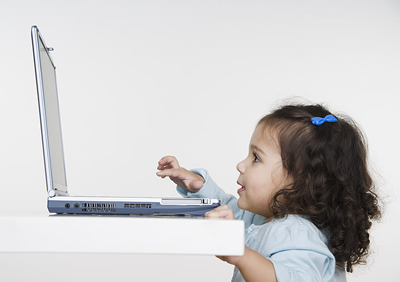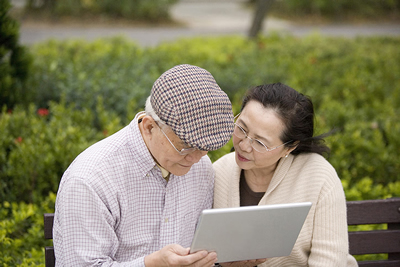KB Times
Katten & Benson, Your Elder Care Law Specialists
August 2010 - Vol 3, Issue 8
|
|
|
| Did You Know? | - In highly rural areas, telehealth reduced hospitalizations by 50%
- In urban areas, telehealth reduced hospitalizations by 29%
Journal of Geriatric Care Management, Spring 2010
|
|
|
Technology and Elder Care
|

Technology is increasingly becoming a tool in the caregiver's toolbox, so I'm going to fill you in on some of the new (and old) options out there.
I've Fallen and I Can't Get Up
We're all familiar with that commercial, aren't we? But the fact is, a personal emergency response system (PERS) can truly be a life saver. There are many, many options out there, but they all work in a similar manner. The base connects to a land line telephone line, and when activated (via pendant or wrist band), a dispatch center receives the call. The dispatcher will then contact a person on the list provided, usually a friend or family member who is close and can enter the house. That person then goes to check on the client, and they let the dispatch center know if any other assistance is needed. These devices can certainly provide a lot of peace of mind, but if a person has dementia, or is just stubborn, they might use the device improperly, or not at all.
Medication Dispensers
Medication dispensers are commonly used by people with early dementia or memory problems. I only take 2 prescription medications a day, and if I had to take more, or take them other than in the morning, it becomes harder to remember to take them correctly.
There are many, many types of medication dispensers available. Of course, the most common, low-tech variety is a pill organizer, which many people use. But when a person is on a lot of medications multiple times a day, a more high-tech version might be needed.
Many of these are locked, so someone will have to load it every week, and they will have multiple compartments for each day. They have alarms that can be programmed so they will actually tell the person it is time to take their medication. The compartment will open so the person can access their medication. A major drawback is that once the person takes the medication out, there is no guarantee they will actually take the medication. I have actually seen a person take the pills out, wonder what he was supposed to do with them, and just put them on the table.
It is possible to have these devices that can be monitored by an outside person, but even then there is no guarantee that the person actually takes the medicine.
Big Brother
I know, the idea of cameras in someone's home can be a little creepy, but in certain circumstances it can be a more economical way to keep an "eye" on someone. It is possible to have cameras installed that are monitored by "tele-caregivers", people off site who monitor the camera. You can choose to have the camera on all the time (more expensive), or you can have the tele-caregiver check in at pre-determined times. It is also possible to have a computer show the tele-caregiver, so the client actually sees and can talk to the tele-caregiver.
There are also a variety of motion sensors and fall detectors available, if the idea of a camera is too much. These can let the dispatch center know if the client is moving from room to room.
These are just a very few of the different types of technology out there that can be used.
|
Keeping in Touch
| Technology also provides a variety of ways families can keep in touch. Skype is a free service that allows people to make video calls using their computer. It's pretty easy to use--once you download the free software, you create a user, and then  you talk to other users. If your computer doesn't have a built-in video camera, you can purchase one for about $40. A word of caution; if there are rambunctious kids on one end, the video often shows up as a blur (my niece Alyssa can rarely be seen on our Skype calls). you talk to other users. If your computer doesn't have a built-in video camera, you can purchase one for about $40. A word of caution; if there are rambunctious kids on one end, the video often shows up as a blur (my niece Alyssa can rarely be seen on our Skype calls).
Lotsa Helping Hands is a free website that provides a lot of services. A family member can go and create a secure family website. Once the website is created, then friends and family can be provided with access to the website. The website has a lot of tools, like a master calendar, which can be helpful for scheduling care or transportation. A blog can be created, so that information can be easily provided to everyone who has access, and pictures can be shared. This is certainly easier than sending emails out to a ton of people.
A blog is another way to keep people updated. Blogspot is the product I use, and it's pretty easy to set up. Wordpress is another blog product I've had a little experience with. I found it a little harder than Blogspot, but still pretty easy. You can limit access to blogs, so they're not just out there, but my guess is the information is not as secure as it might be on Lotsa Helping Hands.
Security is always something to think about with this technology. I don't think any of these sites are properly encrypted to protect medical information, so I would certainly be careful what you put out there. General information is one thing, but scanning and posting actual medical records would not be appropriate.
|
|
|
|
|
|
|
Don't forget that we are always here and ready to help with your long term care planning needs.
Sincerely,
|
|
Kim Olmedo, LCSW, CCSM, CSW-G
Elder Care Coordinator
Katten & Benson
|
|
|
|
|